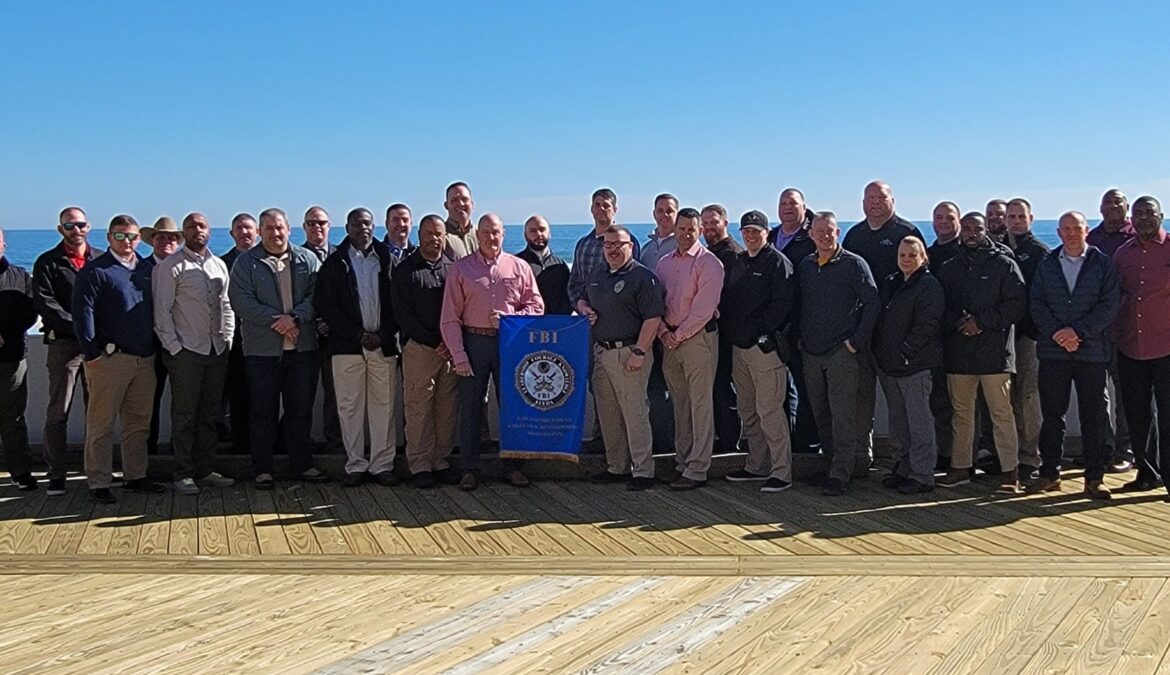As threats to public safety evolve, so must the tactics and tools law enforcement offices utilize. To prepare for the altering threat landscape, the Maryland-National Capital Region Emergency Response System (MDERS) supported the participation of personnel from Prince George’s County Police Department (PGPD) Special Operations Division (SOD) in eight aerial platform training sessions throughout the last fiscal year (FY).
This training was focused on using the Guardian helicopter’s removable benches to engage and disengage active threats, marking a significant enhancement in the department’s operational capabilities.
The integration of this training provides a critical advantage that offers increased mobility, speed, and a unique vantage point for tracking and de-escalating threats. This training was meticulously designed to provide SOD personnel with the expertise required to utilize the benches in various scenarios. Key components of the training include:
- Tactical Insertion and Extraction: SOD personnel learn specific techniques necessary for a safe and efficient engagement and disengagement from the helicopter benches in active threat situations.
- Advanced Aerial Maneuvers: The training covers complex flight patterns and maneuvers crucial during tactical insertions and extractions that offer a new perspective for personnel.
- Safety Protocols and Procedures: Emphasis is placed on crucial safety standards to protect both the officers and the public during aerial operations.
- Simulated Real-World Scenarios: Armed with simulation rounds, personnel conduct real-world exercises to provide a more hands-on experience.
The benefits of this training extend across multiple facets of law enforcement operations. This training enhances rapid response techniques that provide an enhanced ability to quickly insert and extract officers from the helicopter, which could ultimately save lives. Considering PGPD shares its Guardian helicopter with other jurisdictions, this also offers a strategic advantage to agencies outside of Prince George’s County and enables better coordination and decision-making. This technique also increases personnel safety, giving officers an advantage when engaging in threats from a safe distance. Lastly, this training could assist with other operations, including search and rescue operations, disaster response, and large-scale public event monitoring.
Testimonials from the Field: Officers who have participated in this training reported an increased confidence in their ability to execute the techniques and skills learned. Lieutenant Daniel Siculietano from PGPD SOD commented, “This training is invaluable and provides an outstanding asset to the police department.” Five MDERS staff members had the opportunity to observe the training this spring. Emergency Response Specialist Elizabeth Adams, one of those staff members, remarked, “Witnessing aerial platform training firsthand was incredibly enlightening. The dedication and skill demonstrated by the officers from PGPD SOD was truly impressive. This training is crucial to ensuring that personnel are consistently prepared to respond to critical incidents.”
MDERS is committed to continuous improvement and innovation in public safety. Following the success of the first eight training sessions, plans are underway to support several more in the coming fiscal year. By fostering a culture of ongoing education and skill development, MDERS aims to bolster emergency response and public safety.
In conclusion, aerial platform training represents a significant advancement in law enforcement capabilities. By harnessing the tools at their disposal, including the helicopter and attached benches, PGPD SOD personnel are now better equipped to handle active threats with increased efficiency and safety, ultimately enhancing the security and well-being of the community.


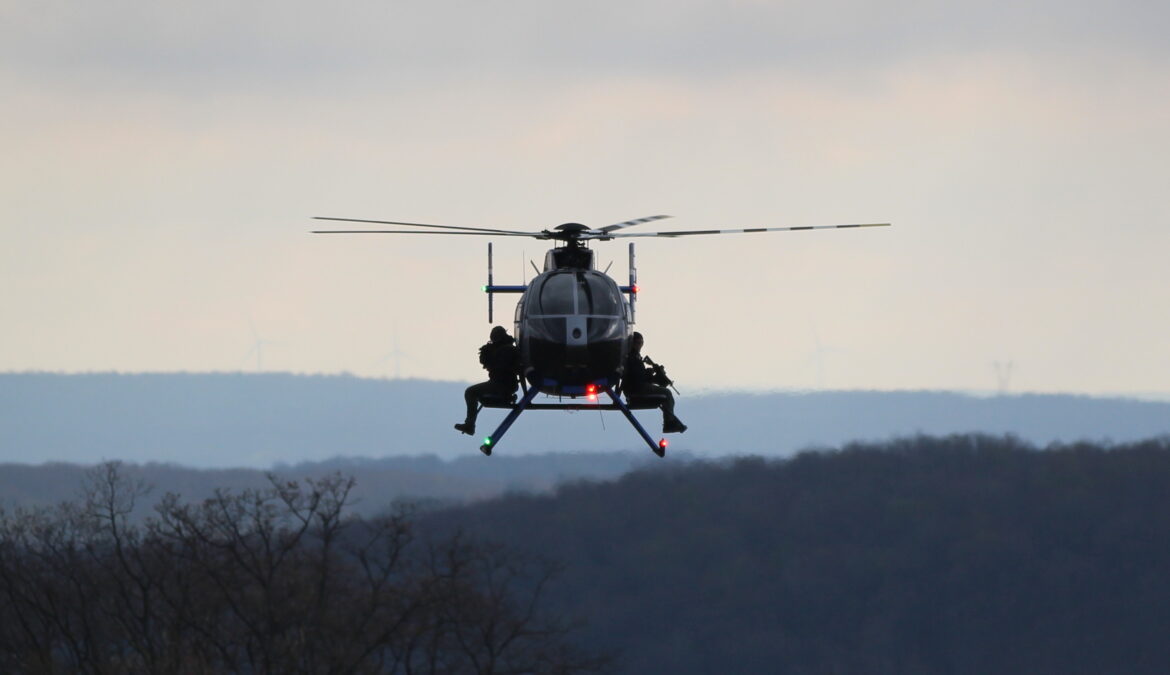

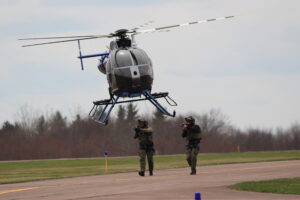 Testimonials from the Field: Officers who have participated in this training reported an increased confidence in their ability to execute the techniques and skills learned. Lieutenant Daniel Siculietano from PGPD SOD commented, “This training is invaluable and provides an outstanding asset to the police department.” Five MDERS staff members had the opportunity to observe the training this spring. Emergency Response Specialist Elizabeth Adams, one of those staff members, remarked, “Witnessing aerial platform training firsthand was incredibly enlightening. The dedication and skill demonstrated by the officers from PGPD SOD was truly impressive. This training is crucial to ensuring that personnel are consistently prepared to respond to critical incidents.”
Testimonials from the Field: Officers who have participated in this training reported an increased confidence in their ability to execute the techniques and skills learned. Lieutenant Daniel Siculietano from PGPD SOD commented, “This training is invaluable and provides an outstanding asset to the police department.” Five MDERS staff members had the opportunity to observe the training this spring. Emergency Response Specialist Elizabeth Adams, one of those staff members, remarked, “Witnessing aerial platform training firsthand was incredibly enlightening. The dedication and skill demonstrated by the officers from PGPD SOD was truly impressive. This training is crucial to ensuring that personnel are consistently prepared to respond to critical incidents.”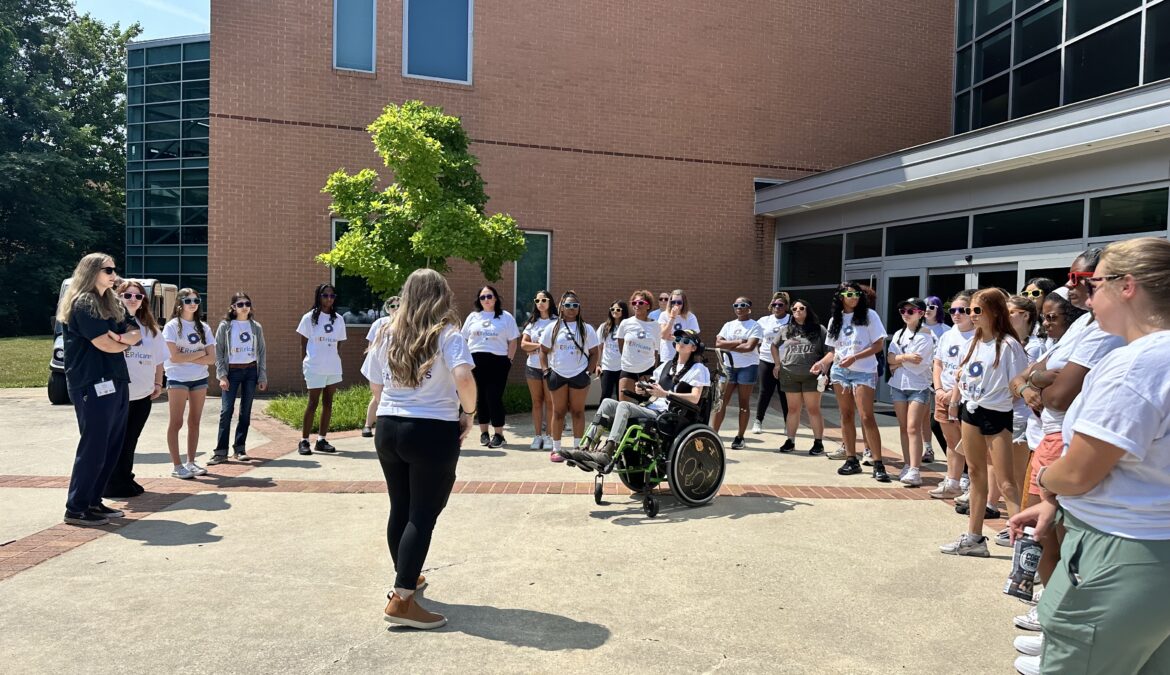
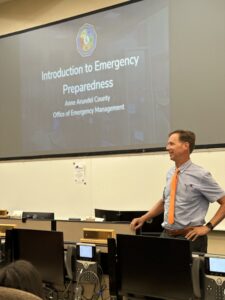





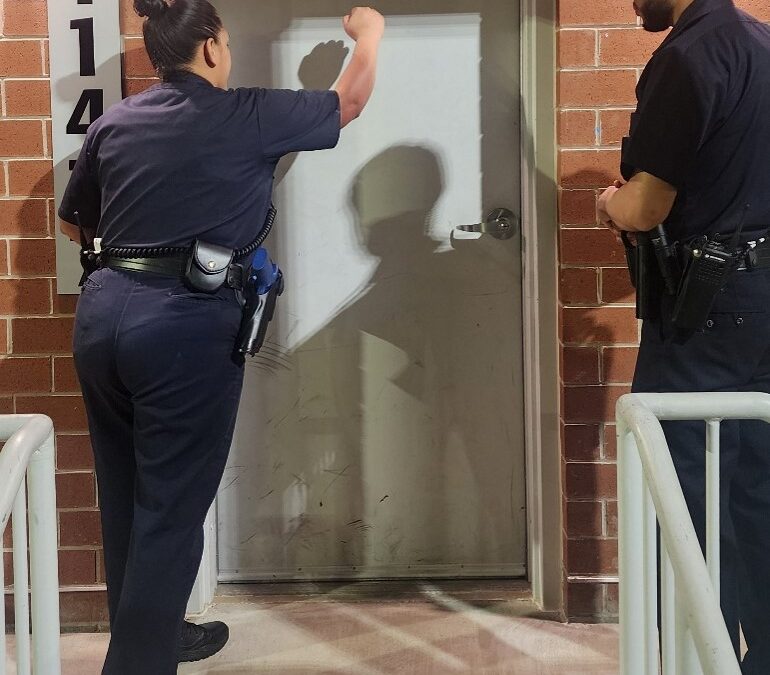



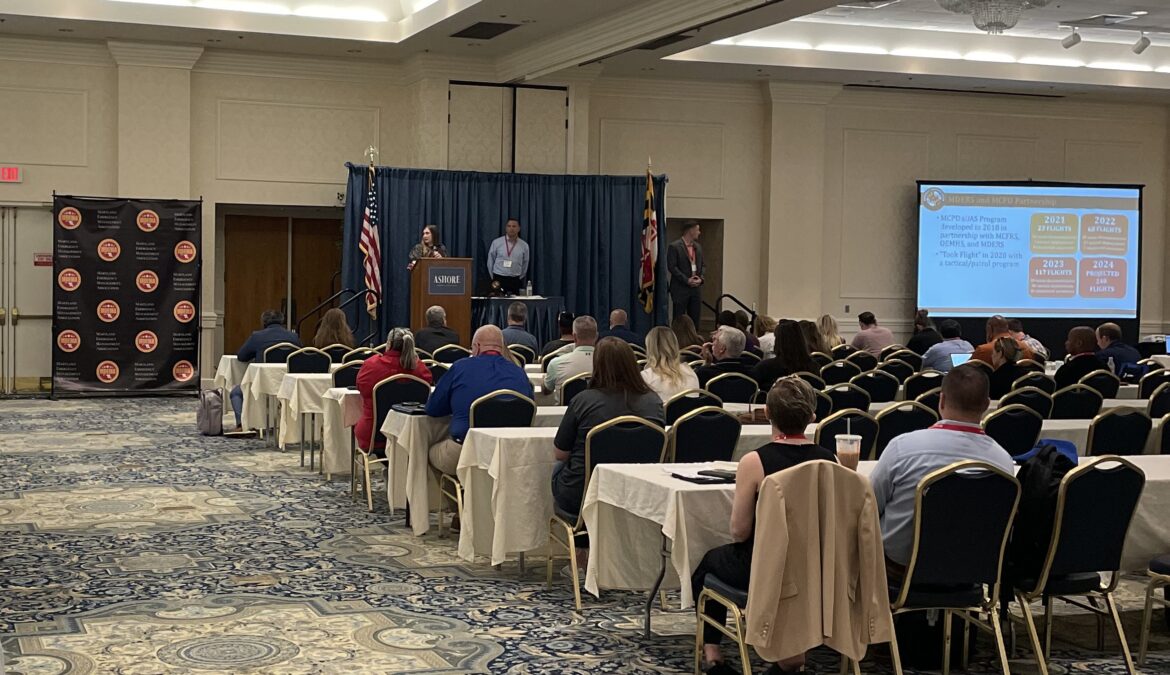
 This program prepositions sUAS platforms, commonly known as drones, to provide rapid situational assessments to emergency calls in Silver Spring. The presenters highlighted the program’s achievements in tracking suspects involved in various crimes and outlined the financial costs, operational logistics, data collection, and transparency efforts required for sustaining the program. Due to its success, MCPD plans to expand the DFR program to several other locations in the county.
This program prepositions sUAS platforms, commonly known as drones, to provide rapid situational assessments to emergency calls in Silver Spring. The presenters highlighted the program’s achievements in tracking suspects involved in various crimes and outlined the financial costs, operational logistics, data collection, and transparency efforts required for sustaining the program. Due to its success, MCPD plans to expand the DFR program to several other locations in the county.


 child and sex trafficking crimes. The presenters, Sergeant Greg Flores and Detective Julia Tafesh of the Las Vegas Metropolitan Police Department (LVMPD), discussed proactive investigation strategies implemented to arrest offenders and innovative approaches to reduce violent crimes associated with human trafficking. During the 2023 Formula 1 and Super Bowl, the pair analyzed how LVMPD’s tactical investigation methods have contributed to a significant number of arrests and recovery of victims.
child and sex trafficking crimes. The presenters, Sergeant Greg Flores and Detective Julia Tafesh of the Las Vegas Metropolitan Police Department (LVMPD), discussed proactive investigation strategies implemented to arrest offenders and innovative approaches to reduce violent crimes associated with human trafficking. During the 2023 Formula 1 and Super Bowl, the pair analyzed how LVMPD’s tactical investigation methods have contributed to a significant number of arrests and recovery of victims. devastating impact of the wildfires. The panelists explored how MD-TF1 performed large-scale searches of collapsed structures and vehicles to identify missing persons, recover valuables, and investigate loss of life. The MD-FT1 was equipped with an experienced medical team consisting of physicians and paramedics who treated life-threatening injuries and illnesses caused by the wildfires. While operating for seven days to mitigate the impact of the wildfires, the panelist emphasized the importance of mental health treatment and peer support to help incident personnel transition back into their daily roles.
devastating impact of the wildfires. The panelists explored how MD-TF1 performed large-scale searches of collapsed structures and vehicles to identify missing persons, recover valuables, and investigate loss of life. The MD-FT1 was equipped with an experienced medical team consisting of physicians and paramedics who treated life-threatening injuries and illnesses caused by the wildfires. While operating for seven days to mitigate the impact of the wildfires, the panelist emphasized the importance of mental health treatment and peer support to help incident personnel transition back into their daily roles.
 During the response phase, participants discussed a variety of initial actions that involved the activation of the Emergency Operations Center (EOC), preparing Hazardous Materials (HAZMAT) operations, contacting poison control personnel, and deploying decontamination equipment to establish the immediate removal of contaminants. Considering the large acute exposure, participants reviewed real-time information sharing capabilities between hospitals and response partners particularly due to requesting specialized EMS transportation resources and disseminating critical incident information. In preparation for treating an influx of patients, these response activities set the foundation for ongoing healthcare coordination.
During the response phase, participants discussed a variety of initial actions that involved the activation of the Emergency Operations Center (EOC), preparing Hazardous Materials (HAZMAT) operations, contacting poison control personnel, and deploying decontamination equipment to establish the immediate removal of contaminants. Considering the large acute exposure, participants reviewed real-time information sharing capabilities between hospitals and response partners particularly due to requesting specialized EMS transportation resources and disseminating critical incident information. In preparation for treating an influx of patients, these response activities set the foundation for ongoing healthcare coordination.